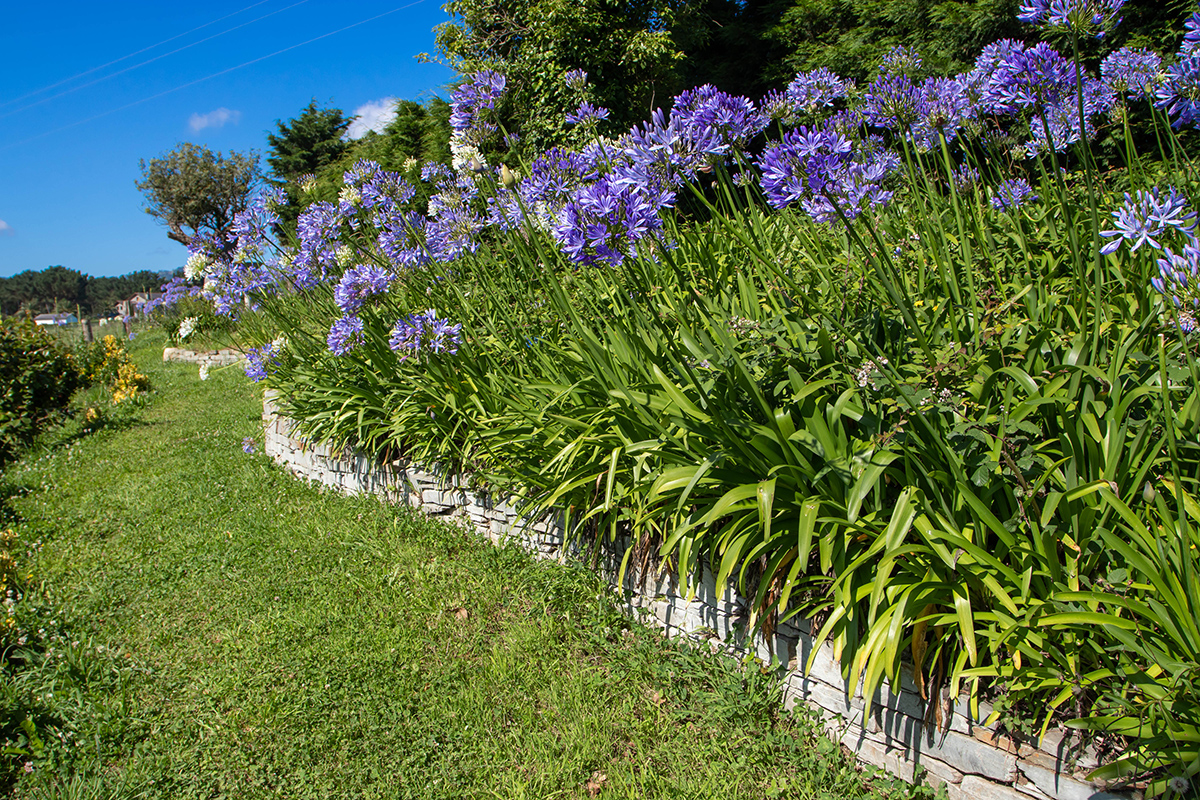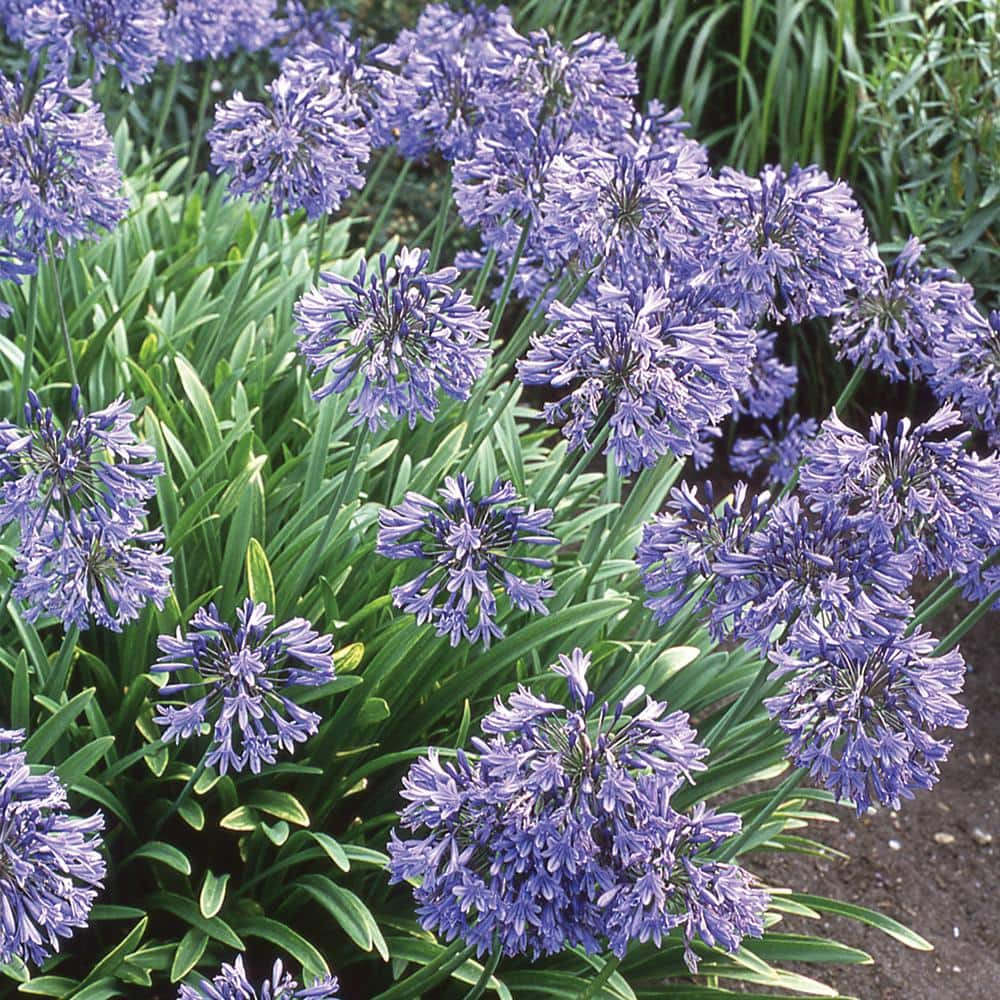Usual Agapanthus Problems and Exactly How to Fix Them
Wiki Article
Letting Loose the Secret to Effective Agapanthus Cultivation: Advice for a Flourishing Garden
In the world of gardening, growing agapanthus effectively requires a calculated approach that incorporates numerous aspects of plant care. With cautious attention to information, one can unlock the tricks to supporting these sensational blossoms, causing a garden that grows with beauty and vibrancy. By comprehending the nuances of agapanthus growing, one can develop an environment where these plants grow and bloom generously. In the following discussion, we will certainly explore necessary tips and techniques that will certainly assist you towards a growing agapanthus yard, offering insights right into best practices, soil problems, sprinkling techniques, and a lot more.Planting Agapanthus: Best Practices
When growing Agapanthus, correct dirt preparation is necessary for guaranteeing effective development and development of these stunning blossoms. Agapanthus, generally known as Lily of the Nile or African lily, flourishes in well-draining soil with a slightly acidic to neutral pH degree - Agapanthus. Prior to growing, it is critical to amend heavy clay soils with organic issue such as garden compost or peat moss to boost water drainage and give essential nutrients for the plantsTo plant Agapanthus, choose a location that receives full sunshine to partial shade, as this will promote healthy development and bountiful blooming. Dig an opening two times the size of the plant's origin sphere and place the Agapanthus at the same depth it was previously growing. Carefully backfill the opening with soil, weighing down firmly to remove any air pockets around the origins.
Water the freshly planted Agapanthus completely and remain to keep the soil equally damp, specifically throughout the plant's active growing season. Agapanthus. Applying a balanced fertilizer once a month can additionally sustain the plant's development and flowering. By following these finest methods for planting Agapanthus, you can produce a magnificent display of these fascinating flowers in your garden
Perfect Dirt Issues for Agapanthus
For ideal growth and flowering success of Agapanthus plants, ensuring the soil conditions are optimal is essential. Agapanthus prospers in well-draining dirt with a slightly acidic to neutral pH level ranging from 6.0 to 7.0. This kind of dirt enables adequate water drainage, protecting against waterlogging which can bring about root rot. To improve soil drain, consider adding natural issue such as garden compost or peat moss when preparing the planting site. Furthermore, Agapanthus favors soil that is rich in nutrients, so incorporating a balanced plant food during the growing period can promote healthy development and vibrant blooms.
Watering and Feeding Tips
To ensure healthy development and dynamic flowers, appropriate watering and fertilizing methods are important for effective Agapanthus cultivation. Agapanthus plants gain from regular watering, especially during the growing period. It is suggested to water deeply when a week, making certain the soil is wet yet not soaked. Throughout heat or in pots, even more frequent watering may be needed to protect against the dirt from drying totally.When it pertains to feeding Agapanthus, a well balanced fertilizer with equal parts nitrogen, phosphorus, and potassium can be used in the springtime to promote healthy and balanced growth and flowering. Slow-release plant foods are excellent for supplying nutrients slowly over an extended duration. Avoid over-fertilizing, as this can bring about excessive vegetation growth at the expenditure of blossoms.
Furthermore, incorporating organic issue like compost into the dirt can improve nutrient levels and enhance soil framework, assisting in the total health of the Agapanthus plants. By adhering to these watering and feeding tips, garden enthusiasts can guarantee their Agapanthus plants prosper and produce stunning display screens of blossoms.
Pruning and Deadheading Methods
Appropriate pruning and deadheading methods play an essential duty in maintaining the health and wellness and visual appeals of Agapanthus plants, enhancing the vital practices of watering and feeding for successful growing. Pruning Agapanthus involves eliminating invested blossom heads, yellowing or dead fallen leaves, and overall shaping of the plant to promote far better growth. Deadheading, the process of eliminating discolored blossoms, not only improves the plant's look however additionally encourages more blooming.When deadheading Agapanthus, it is recommended to clip off the flower stem more info here at the base using sharp, clean shears. This procedure reroutes the plant's energy from seed production back into origin and vegetation growth, promoting a healthier and extra durable plant. Regular deadheading can prolong the flowering duration of Agapanthus and prevent self-seeding, which can result in congestion.
In terms of pruning, Agapanthus typically take advantage of a light trim after blossoming to clean up the plant and encourage fresh growth. Cutting down the spent blossom stems and getting rid of any kind of broken or dead vegetation assists preserve the plant's vigor and right here general appearance. However, it is necessary to prevent cutting into the crown of the plant, as this can deteriorate its health and wellness.

Protecting Agapanthus From Vermins and Diseases
Implementing effective parasite and condition management methods is vital to guarding the health and wellness and vitality of Agapanthus plants in growing. One common pest that affects Agapanthus is the Agapanthus borer, a caterpillar that tunnels into the plant, triggering damage to the leaves and flowers.In addition to insects, Agapanthus are prone to diseases such as root rot and fungal leaf areas. These problems can frequently be stopped by making sure proper water drainage and preventing overwatering. If indicators of condition show up, impacted parts of the plant ought to be promptly removed to avoid additional spread. Fungicides might likewise be used as a treatment action, adhering to the supplier's guidelines very carefully. By remaining vigilant and resolving insect and condition problems immediately, gardeners can help their Agapanthus flourish and flourish.

Conclusion
Finally, successful growing of agapanthus calls for correct growing methods, optimal soil here are the findings conditions, sufficient watering and fertilizing, normal trimming and deadheading, and defense from parasites and illness. By following these pointers and methods, gardeners can guarantee a prospering garden full of beautiful agapanthus blossoms. Agapanthus. Bear in mind to keep constant care and attention to detail to promote the health and wellness and durability of these stunning plantsWhen planting Agapanthus, correct dirt prep work is important for making sure effective development and growth of these beautiful blossoms.Water the recently planted Agapanthus extensively and proceed to maintain the soil uniformly damp, specifically throughout the plant's active expanding season.For ideal development and growing success of Agapanthus plants, ensuring the dirt conditions are perfect is important. When hair transplanting or growing Agapanthus, make sure the dirt is well-prepared to supply the required structure for the plants to establish themselves efficiently. One typical pest that impacts Agapanthus is the Agapanthus borer, a caterpillar that tunnels into the plant, triggering damage to the flowers and fallen leaves.
Report this wiki page